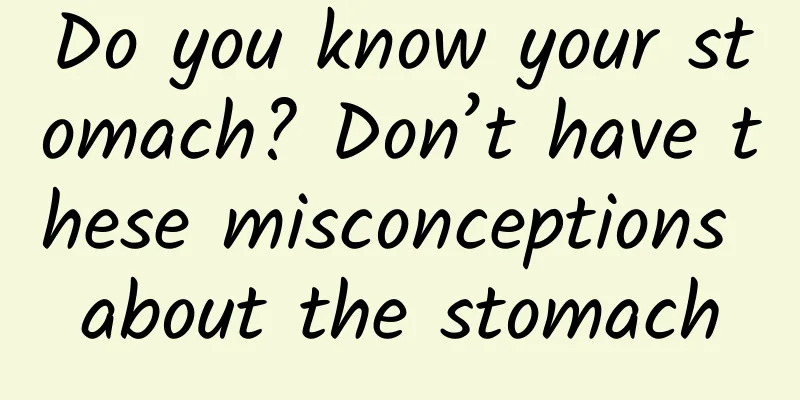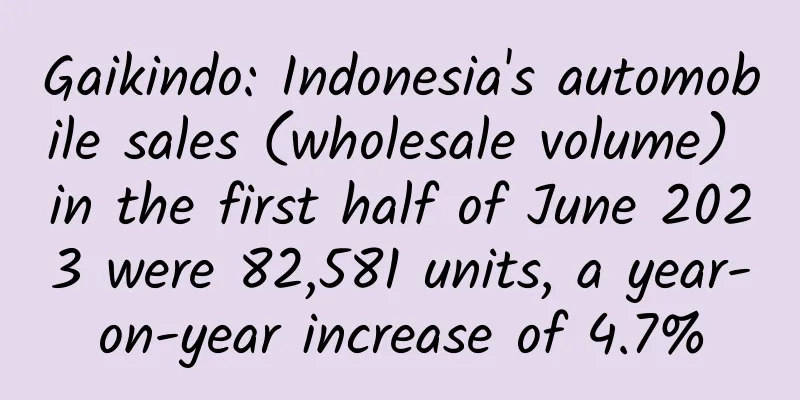No wonder I can’t wear a turtleneck in winter! I found the cause of my long-standing problem...

|
Today, #Why do some people feel uncomfortable when wearing a turtleneck# became a hot topic on Weibo, attracting the attention and heated discussion of many netizens. Image source: Weibo screenshot Many netizens said that wearing turtleneck sweaters and scarves would make them "very uncomfortable" and "affect the whole person". Some netizens even felt "nauseous", "weak all over" and "like being 'assassinated'". Image source: Weibo screenshot Why does this happen? Many people think it may be because they are wearing clothes backwards, have a short neck, or are too fat. However, if you feel uncomfortable, dizzy, nauseous, or short of breath when wearing high-necked clothes or scarves, as if your throat is being strangled, then you may be suffering from "carotid sinus syndrome", also known as "collar syndrome". What is "collar syndrome"? "Carotid sinus syndrome" or "collar syndrome" is a group of symptoms caused by hypersensitivity of the carotid sinus reflex, including nausea, tinnitus, and dizziness. The carotid sinus is located at the end of the common carotid artery and the beginning of the internal carotid artery. It is slightly bulging, with a thick outer membrane on the sinus wall, which contains abundant free nerve endings, called baroreceptors. It can sense changes in blood pressure and blood oxygen, regulate the activities of the heart and blood vessels through nerve reflexes, and maintain the stability of blood circulation. When blood pressure rises, the carotid sinus expands, or when external pressure is applied, the pressure receptors are stimulated, which can reflexively cause the heart rate to slow down and peripheral blood vessels to expand, thereby reducing blood pressure. Under normal circumstances, general external stimuli will not affect the carotid sinus, and it will only work when blood pressure is too high or too low. However, the carotid sinus of some people reacts abnormally strongly. When the neck is compressed or pressed, nerve reflexes are easily triggered, causing the heart rate to slow down and blood pressure to drop, leading to cerebral ischemia and causing symptoms such as dizziness and fainting. This is one of the main manifestations of carotid sinus syndrome. The onset of carotid sinus syndrome is usually short, and patients often feel dizzy, nauseous, pale, cold sweats, and mental fatigue, which usually lasts for a few seconds and slowly eases after the compression is stopped. If the compression is too strong or too long, blood pressure and heart rate will drop sharply, which may cause insufficient blood supply to the brain, causing symptoms such as fainting and loss of consciousness in mild cases, and cardiac arrest in severe cases, which is life-threatening. Image source: Pixabay These 4 types of people are prone to "collar syndrome" Carotid sinus syndrome is not common among ordinary people, but generally occurs in the following four groups of people: ① The presence of high-risk factors for vascular sclerosis, such as hypertension, diabetes, and hyperlipidemia, is more common in male elderly people over 50 years old; ② Abnormalities in the neck structure, such as carotid artery sclerosis or embolism, carotid body tumors, inflammation, tumors or injuries near the carotid sinus, can cause the carotid sinus to become overly sensitive; ③ History of neck surgery and/or radiotherapy, which may damage or change the morphology of the carotid sinus; ④ Among young women, some have autonomic nervous system dysfunction, which causes them to overreact to stimulation of the carotid sinus. Image source: unsplash Patients with "collar syndrome" should not do these 5 things The occurrence of carotid sinus syndrome is related to the external stimulation of the carotid sinus. Wearing a turtleneck sweater or a scarf is only one of the causes. In daily life, in addition to trying to avoid wearing turtlenecks or wearing tight scarves, patients should also pay attention to avoiding the following 5 high-risk behaviors: ① Wearing a tie or neck jewelry too tightly: If you wear a tie or neck jewelry, be careful not to make it too tight or too heavy, and avoid wearing it for a long time, otherwise it may irritate the carotid sinus and cause discomfort or danger. ② Repeated friction of the carotid sinus during haircuts and shaving: Patting, massaging, kissing the neck, etc., these seemingly normal actions may trigger carotid sinus syndrome. ③ Sudden and violent head turning or looking up: These actions may stretch or twist the carotid sinus, resulting in blood flow obstruction or nerve reflex disorders. If you need to turn your head or look up, it is recommended to do it slowly and gently, and do not make excessive or violent movements; ④ Standing up and other rapid changes in body position: These actions may cause a sharp change in blood pressure, stimulate the carotid sinus, and cause dizziness or fainting. If you need to stand up or change your body position, it is recommended to do it slowly and steadily, and avoid sudden or rapid movements; ⑤ Emotional excitement: Emotional excitement may cause fluctuations in blood pressure and heart rate, stimulate the carotid sinus, and cause adverse reactions. It is recommended that patients try to stay calm and peaceful in their daily lives and not be too excited or nervous. Image source: unsplash What should I do if “collar syndrome” occurs? If you unfortunately suffer from carotid sinus syndrome, what should you do? The following methods can help you or others in time: ① When you feel dizzy, nauseous, sweating or other discomfort, quickly loosen your collar, lie on your back with your legs raised to allow blood to return to the heart. This will allow more blood to reach the brain, relieve cerebral ischemia and prevent coma or brain damage. ② If the patient faints, check the patient's heartbeat and breathing immediately. If the heartbeat and breathing stop, call 120 immediately and perform cardiopulmonary resuscitation, that is, press the chest with your hands and breathe from mouth to mouth until the rescue personnel arrive. This can ensure the patient's vital signs and greatly reduce the risk of death or permanent disability. ③ If conditions permit, send the patient to the hospital for treatment as soon as possible to determine the cause and severity of the carotid sinus syndrome and take appropriate treatment measures. This can prevent the recurrence of carotid sinus syndrome, reduce complications, and improve the patient's quality of life. Although carotid sinus syndrome is uncommon, it may occur without any warning, causing you to become dizzy, comatose, or even life-threatening. We should increase our awareness and vigilance about it and take timely measures. Author: Meng Yao, doctor of medicine at Zhongshan Hospital, Fudan University Reviewer: Tang Qin, Director and Researcher of the Science Popularization Department of the Chinese Medical Association |
<<: How to cook hot pot tripe? 5 bad habits of eating hot pot are harming your health!
Recommend
To enter the top five of the list, this social e-commerce app did these operations
While concepts such as new retail and unmanned st...
iOS 7 exposed the latest vulnerability, unlocking in as fast as 5 seconds
Some users have discovered the latest lock screen ...
Wei Jianjun poached two senior executives in 15 days to form a "firefighting team"! WEY only completed 26.88% in 5 months
Haval H8 sold 128 units per month, WEY P8 sold 50...
Baidu promotion video information flow advertising display style - live broadcast
Information flow advertising style - live broadca...
5 tips to solve 80% of the troubles of bringing goods to Douyin
The method of selling goods through live streamin...
How to create a hit product amid product homogeneity?
Have you noticed that some products become popula...
Are you feeling painful from spending too much on promotion? Give you an effective new media marketing channel!
This article divides the nine common new media pl...
How to increase website user activity by attracting new users and promoting activation
User activity is an eternal pain in the hearts of...
Aion V (Tyrannosaurus Rex) opens its doors for the first time, with eight leading product strengths shaping a new global classic
On June 20, Aion's first global strategic mod...
Another new species has appeared! Why do rare animals and plants appear in Danxia Mountain?
Recently, the investigation team discovered a spi...
How to reduce the size of iOS executable files
Reducing the size of iOS installation packages is...
After the failure of Fire Phone, Amazon's hardware team Lab126 began to turmoil
[[125861]] The recent months have been turbulent ...
iOS 9 will allow developers to create Safari ad blocking software
[[136409]] On June 11, digital publishers and onl...
Wall Street Academy Excel Financial Business Chart Special Topic
Wall Street Academy Excel Financial Business Char...
Liquid robots become a reality, inspired by sea cucumbers
Produced by: Science Popularization China Author:...









